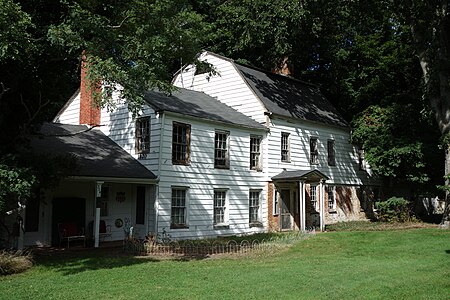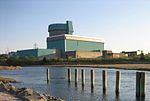Tuthill-Lapham House
Federal architecture in New York (state)Houses completed in 1820Houses in Suffolk County, New YorkHouses on the National Register of Historic Places in New York (state)National Register of Historic Places in Suffolk County, New York ... and 1 more
Suffolk County, New York Registered Historic Place stubs

Tuthill-Lapham House, also known as Friendly Hall, is a historic home located at Wading River in Suffolk County, New York. The oldest section is a Federal style three story building with a gambrel roof, built around 1820. Attached is an addition from 1838 and a two-story addition to the west dated 1869. A kitchen wing was added in the 1920s.It was added to the National Register of Historic Places in 2009.
Excerpt from the Wikipedia article Tuthill-Lapham House (License: CC BY-SA 3.0, Authors, Images).Tuthill-Lapham House
Sound Road,
Geographical coordinates (GPS) Address Nearby Places Show on map
Geographical coordinates (GPS)
| Latitude | Longitude |
|---|---|
| N 40.964611111111 ° | E -72.852091666667 ° |
Address
Sound Road 324
11792
New York, United States
Open on Google Maps








